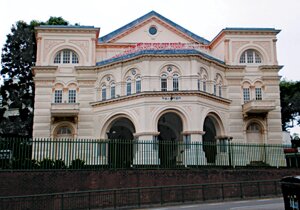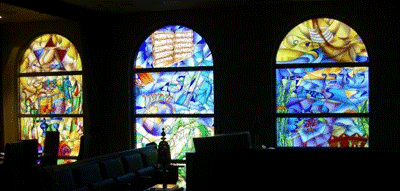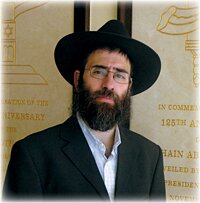We arrived in the late afternoon in Singapore. Our initial impression of the airport was that it was newish, modern and like the Hong Kong airport, seemed to run with a high level of efficiency.
A few words of introduction about Singapore.
Singapore (literally "singapura" which is the Malay word for "lion city"), is a southeast Asian city-state-island at the very southern tip of the Malay Peninsula, just 85 miles north of the Equator. Singapore was a trading post for the East India Company in 1819, and became a British colony in 1824.
It is the world's fourth largest financial centre and its port is one of the busiest in the world. It has the third highest per capita income in the world. There are only 5 million people in Singapore with three quarter of them being Chinese. The other main minorities are Indian and Malay and because of the British influence, there are 4 official languages; English, Chinese, Malay and Tamil.
Singapore is at the crossroads of numerous international trade routes and has become South-East Asia's most economically successfully country.
In 1819, the Sultan of Johore permitted English businessman Sir Stamford Raffles and the East Indian Company to establish a trading post in Singapore. At the time, Singapore was a small, swampy fishing village on the Malay Peninsula. Nevertheless, with grand prospects ahead, several Jewish traders from Baghdad migrated to Singapore and established the highly successful trade center Change Alley.
In 1824, the Sultan ceded the 200 square mile area to Great Britain, and in 1830, according to historical records, the Jewish population totaled nine Jewish traders living in Singapore. In 1840, the wealthy Sephardic Sassoon family established business interests in Singapore, and the Jewish population increased. The Jewish community built a 40-person synagogue on a street still called "Synagogue Street." By local custom, the Jews were allowed to travel by rickshaw on Shabbat.
The Jewish population, mostly Sephardim, migrated mainly from Baghdad and other communities in the Near East. The new community also included Sefardim from Persia and Ashkenazim from Eastern Europe, searching for both religious freedom and economic opportunity. Some went first to Malaysia, and then on to Singapore when Malaysia did not offer the freedoms and opportunities they had originally sought.
The Orthodox Singapore community was small but tight-knit, strengthened by religious bonds, common geographic origins, and years of close marriages.
By the 1870's, the community population totalled 172 members, 116 males and 56 females.
On April 4, 1878, the new Maghain Aboth Synagogue on Waterloo Street was consecrated. It was a single story building, but an upper gallery for women was added later. Even today, the synagogue counts both Sephardim and Ashkenazim among its members.

Menasseh Meyer, supposedly the richest Jew in Asia, contributed significant funds to build the new synagogue. He had arrived in Singapore at age 15, with little to call his own, and eventually owned nearly half of Singapore's property. He grew wealthy as a real estate dealer and as a trader of opium, legal under British rule. The Queen knighted Menasseh Meyer for raising the cultural level of the city.
A 1904 argument with a fellow member of the Maghain Aboth Synagogue led Sir Menasseh Meyer to build his own private synagogue, Chesed-El, in 1905. To obtain the minimum ten men required for communal prayer, Menasseh Meyer employed "Minyan Men." But in 1920, his Minyan Men went on strike, demanding higher salaries and rickshaw fare for their daily services.
 |
| The Chesed El Synagogue |
 |
| Interior of the Chesed El |
 |
| Stained Glass WIndows of the Chesed El |
In 1905, when the Chesed-El Synagogue was built, there were roughly 500 Jews in Singapore. The community numbered close to 600 Jews in 1911 and 832 Jews in 1931.
In 1939, on the eve of World War II, there were 1,000 Jews in Singapore, most of whom were interned by the Japanese during the war. They were forced to wear armbands and medallions with the word Jews inscribed on them; the men had to till the fields. After the war, many of the Jews left for Australia, England, the United States, and Israel.
The former president of the Jewish community, David Marshall, stayed in Singapore. He was born in 1908 to a Baghdad-Persian Jewish family and studied law in England before he joined the British Army as a volunteer and traveled to Singapore. When the British granted Singapore partial independence in 1955, Marshall was appointed as the first Chief Minister. But when Great Britain denied Singapore full sovereignty, Marshall resigned from his post in protest. After full sovereignty was finally attained, he was elected to the legislature and later served as Singapore's ambassador to several European countries.
Today, Singapore as a whole is comprised of approximately 80% ethnic Chinese, 15% ethnic Malay, and 5% ethnic Indian. The permanent Jewish population is comprised of over 300 members. These Jews are mainly involved in the practice of law, financial services and other business or banking activity.
There is also a tight-knit Israeli community that exists outside of the greater Jewish community. The Israelis mainly work for the Israeli embassy or military related industries, holding large contracts with the Singapore government. A trade agreement was signed between Israel and Singapore in 1968 followed by the formal establishment of diplomatic relations in 1969.
Religious life at both the Maghain Aboth and Chesed-El Synagogues is still active, with daily minyanim, kashrut observance, adult education, and other community activities.
The Jews of Singapore are fortunate to live in an atmosphere free from anti-Semitism, especially considering their unique location set between Malaysia and Indonesia, two Muslim nations. The Singapore government and Singaporeans overall are known for their acceptance and sensitivity to the particular observances of all religious and ethnic groups.
The Rabbi, Rav Mordechai Abergal, is a trained shochet (ritual slaughterer) and provides the community with fresh chickens on a weekly basis. He has been credited with creating the impetus for wider Kashrut observance within the community.
 |
| Rabbi Abergal |
Singapore's founding father and prime minister, Lee Kuan Yew, asked Israel to help establish his country's army almost immediately after Singapore received independence from Malaysia in August 1965. He had earlier requested help from India and Egypt, but they turned him down.
The Israeli delegation consisted of six officers, who were divided into two teams. One, headed by Elazari, set up the defense and internal security ministries, while the other, headed by Maj. Gen. Yehuda Golan, established the military infrastructure. They followed the model of the IDF, with a standing army and reserves. The officers also served as instructors in the Singapore army's first basic training courses and its first course for officers, both commissioned and noncommissioned. The members of the delegation that went to Singapore were trained by the late cabinet minister Rehavam Ze'evi, who wrote the blueprint for Singapore's armed forces.
No comments:
Post a Comment